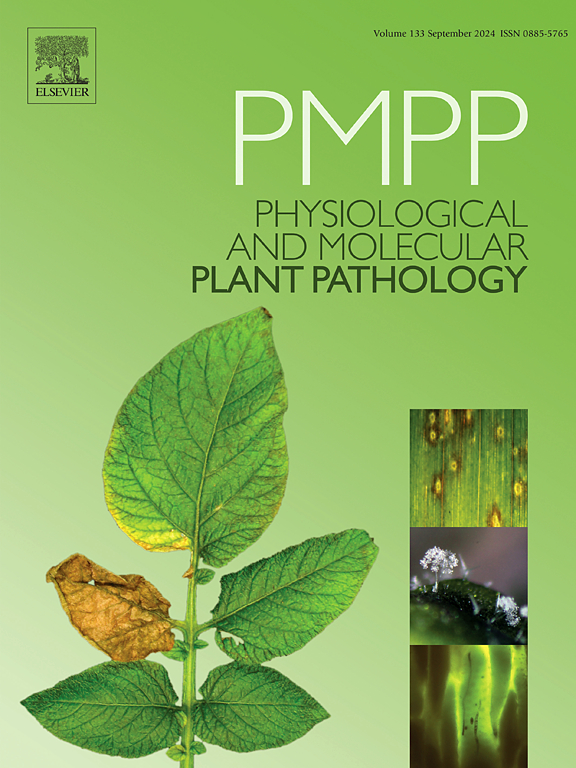沉香形成的综合病理生理:从真菌进入到代谢物积累
IF 2.8
3区 农林科学
Q2 PLANT SCIENCES
引用次数: 0
摘要
沉香木是一种主要从沉香属植物中提取的高价值芳香树脂,是通过生物和非生物胁迫,特别是真菌感染引发的复杂过程形成的。自然形成是罕见和缓慢的,促使越来越多的兴趣人工诱导使用真菌接种。本文综述了真菌在沉香生物合成中的作用,详细介绍了真菌入侵和寄主反应在沉香树中通过氧化应激、植物激素信号和代谢程序沉积次生代谢物的机制。重点介绍了不同沉香属植物人工诱导沉香形成的真菌菌株和方法,以及可能影响真菌接种效果的因素。本文通过对沉香未来发展方向和目前研究局限的阐述,为制定标准化、可持续的沉香诱导策略提供了必要的认识,并强调了基于真菌的方法在支持保护和商业化生产方面的潜力。本文章由计算机程序翻译,如有差异,请以英文原文为准。

Integrative pathophysiology of agarwood formation: from fungal entry to metabolite accumulation
Agarwood, a highly valued aromatic resin derived primarily from Aquilaria species, is formed through a complex process triggered by biotic and abiotic stresses, particularly fungal infections. Natural formation is rare and slow, prompting growing interest in artificial induction using fungal inoculation. This review explores the role of fungi in agarwood biosynthesis, detailing the mechanisms by which fungal invasion and host responses converge to deposit secondary metabolites, through oxidative stress, phytohormonal signaling, and metabolic programming in Aquilaria trees. Emphasis is placed on fungal strains and method employed to artificially induced agarwood formation in different Aquilaria species, and factors which can possibly influence the efficacy of fungal inoculations. By demonstrating the future directions and current research limitation, this article provides an understanding needed for the development of standardized, sustainable agarwood induction strategies and highlights the potential of fungal-based approaches to support conservation and commercial production.
求助全文
通过发布文献求助,成功后即可免费获取论文全文。
去求助
来源期刊
CiteScore
4.30
自引率
7.40%
发文量
130
审稿时长
38 days
期刊介绍:
Physiological and Molecular Plant Pathology provides an International forum for original research papers, reviews, and commentaries on all aspects of the molecular biology, biochemistry, physiology, histology and cytology, genetics and evolution of plant-microbe interactions.
Papers on all kinds of infective pathogen, including viruses, prokaryotes, fungi, and nematodes, as well as mutualistic organisms such as Rhizobium and mycorrhyzal fungi, are acceptable as long as they have a bearing on the interaction between pathogen and plant.

 求助内容:
求助内容: 应助结果提醒方式:
应助结果提醒方式:


